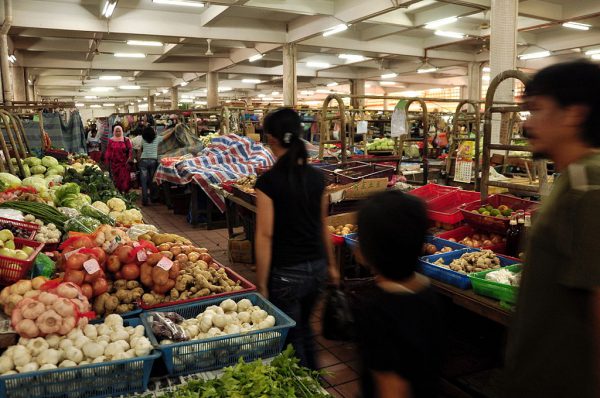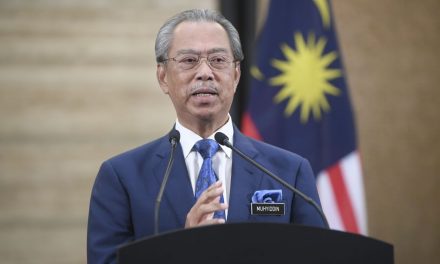Malaysia’s widening income gap between rich and poor
The gap in income between the rich, middle class and poor in Malaysia has widened since 2008, according to a study by Khazanah Research Institute (KRI). It noted that the gap in the real average income between the top-20% households (T20) and the middle-40% (M40) and bottom-40% (B40) households in Malaysia has almost doubled compared to two decades ago. According to the report, the average household expenditure in 2016 was RM4,033, up from RM1,161 in 1993. In 2016, households with incomes below RM2,000 had spent 94.8% of their incomes on consumption items, compared to only 45% spent by households earning above RM15,000 monthly. This called for greater emphasis and investment in human capital to address the income disparities in the country. Meanwhile, KRI also noted that despite the improvement in income inequality and declining poverty rates in Malaysia, poverty in the country remained rampant. (MalaysiaKini)
2018 govt revenue drops to RM21bil with SST, says Lim
The Finance Ministry says the government revenue for 2018 will decline to RM21 billion, after the reinstatement of the Sales and Services Tax (SST) on Sept 1, 2018 to replace the Goods and Services Tax (GST). Minister Lim Guan Eng said the revenue from the SST for the period from September to December this year is estimated at RM4 billion. The net impact is RM17 billion for 2018, he said. The GST revenue shortfall will be partly made up by the higher petroleum revenue estimated at RM5.4 billion. Lim noted other measures to increase the federal government’s revenue include continuous audits and investigations to raise tax compliance and reduce the tax gap; exploring new revenue sources, especially from online transactions and the review of tax incentives; and rationalise government departments, programmes and projects to avoid overlap and increase efficiency and transparency. These measures are expected to reduce overall expenditure by RM10 billion. (The Edge Markets)
Sunway Property develops Sunway Velocity Two worth RM2bil
Sunway Property is developing Sunway Velocity Two on an 8.05-acre site in Cheras with a GDV of RM2 billion. The project, located opposite the company’s transit-oriented integrated development Sunway Velocity, will consist of more than 70% residential components, comprising four residential towers and two commercial towers. Sunway Velocity Two will be a Green RE certified development which includes energy efficient and motion sensors lighting, and rainwater harvesting. The first phase of the launch will consist of two 53-storey residential towers. Sunway Velocity Two’s accessibility is highly commendable as the development will be connected via three MRT and two LRT stations. It is linked to the array of amenities in Sunway Velocity such as shopping mall, medical centre, education facilities, hotel, offices and retail via a covered elevated linkway. (NST Online)

Foreign construction workers in Malaysia (Photo from NST)
2.2 million foreigners sought greener pastures in Malaysia in 2017
Malaysia was home to around 2.2 million foreign workers in 2017, with most of them hired in the agriculture and construction sectors. According to The State of Households 2018 report by Khazanah Research Institute (KRI), last year the two sectors employed 40.5% of all foreign workers, although a sizeable number of them – at 35.9% – were employed in services while the remaining 23% in manufacturing. According to the study, the Malaysian labour force was about 10.6 million strong in 2010 but grew to 12.7 million in 2017. The foreign labour force stood at about 1.7 million in 2010. Providing data for 2015, the report said that Indonesians remained the largest group of foreign workers at 39.2%, followed by Nepalese (23.5%) and Bangladeshis (13.2%). (NST Online)
Singapore home sales rebound as buyers move past curbs
Private home sales in Singapore jumped 51% in September as developers marketed more projects post the Hungry Ghost Festival month, and as buyers moved past the additional cooling measures imposed in July. Developers in the city-state sold 932 units in September – 42% higher year-on-year – compared with 617 units in August. Singapore took renewed steps in July to cool the island’s property market after home prices rose more than 7% in the first six months of the year. A rush of transactions was fueled by aggressive land bids from developers and so-called en-bloc transactions. Home prices on the island may rise as much as 10 percent by the end of 2019 and are on track to double by 2030 as faster income growth overpowers the recent property curbs and higher interest rates. (The Star Online)





